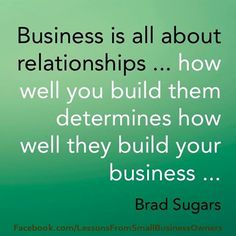10 Things You Need to Do Before You Take Clients

We live in an era where people aren’t always satisfied with working 40 hours per week for someone else for half of their lives. We want something more. We want to challenge ourselves. We want to be our own boss and be in better control of our time and future.
Now that your mindset is more focused and you have decided you’re ready to be a business owner, there’s one question that often follows:
What’s next?
The answer is never simple. Being a business owner takes hard work, dedication, and flexibility. You have to be willing to make sacrifices to hit your goals in a timely manner. And there’s never one answer for anything.
It’s good to start small.
If you plan to offer services such as graphic designing or web development, here are 10 things we recommend you do before you take clients:
1. Figure out what you are good at.
Do you know you want to be a business owner but are not sure what you want to sell? Write down the tasks you are good at, and narrow it down from there until you find a viable service model.
Tip: Read and experiment with lots of ideas to see if a business plan will work or not. In the brainstorming process, no idea is too crazy. (In this case, crazy is better!)
2. Research your competition.
If you don’t keep tabs on your competitors (or potential competitors), your business may suffer. You won’t know how to make your services competitive or how to set pricing because you won’t have anything to compare to. Thoroughly research your competition before setting up operations to make sure you’re on the right path before putting yourself out there.
Tip: Save time conducting a competitive analysis by following a template such as what is shown in the image below.
3. Educate yourself and work on your craft.
Is this really an industry you want to do? Take a look at the trends in the industry, who your major competitors are, and investigate any opportunities you may see available. Is there something lacking? Figure out what that is and research everything you can to prepare yourself. Before taking clients, make sure your skills and knowledge are up-to-date. Read and practice as much as you can so you can offer a valuable service that people will pay good money for.
Tip: Look up online courses for your craft and get a certificate to make you more marketable.
4. Find out what makes you unique.
This goes back to researching your competition and working on your craft. Is there something your competition isn’t seeing or offering that you think would be a good fit? Consider making that your selling point on your services. Is there something you do really well at? Figuring out what makes you unique is crucial in pricing your services and creating great long-term relationships with clients.
Tip: Make a list of all of your relevant skills and service offerings. Review what your competition offers until you come up with 1-2 items that you can specialize in.
5. Create a business plan.
Most of us have heard the expression, “Failing to plan is planning to fail.” With a business plan, you can avoid that. Your business will have a higher chance at success because you’ll be to outline your goals, actions, and create sustainable ideas for the future that will help you grow. You can plan new service and product launches, budgets, and more based on demand.
Tip: When starting out, set monthly and quarterly goals to keep yourself on track. Don’t just focus on yearly goals. Things change constantly, and if you set goals over a smaller period of time, it will be easier to make changes and stay accountable.
6. Set up a website with competitive service offerings.
Websites are around so people can see what you are like and what you have to offer. Make sure to include a page with contact information and detailed service offerings (with prices if applicable) based on your competitive research.
Tip: When pricing your services, follow the model as shown below to see what you should be taking into consideration.
7. Write a compelling bio.
You’ll need to have a quick blurb on who you are and what you do so it will be consistent among your social media, website, marketing materials, and the rest of your online/offline presence. Keep it quick, catchy, and to-the-point. Make sure you highlight any relevant achievements, awards or education you may have. You can either write the bio yourself or hire someone to do it for you. Either way, make sure you proofread it before sending it out to the public.
Tip: Write the bio in 3rd person. It significantly increases professionalism and recognition for the brand.
8. Design a contract.
If you’re a service provider, you’ll need some type of contract in place to work with clients so you can make sure you both hold up your end of the deal. You can hire a lawyer to help you draft one, create your own or purchase a template online. Before doing anything, you might want to look at examples online to get a feel of what you are looking for out of a contract. As always, make sure you proofread no matter which avenue you take.
Tip: Include a clause that shows the client will need to pay a late fee in the event they are late in making payment to ensure you are getting paid for your time (including the waiting time).
9. Refine your pitch.
How are you going to talk to potential clients? How are you going to create clients out of new connections you meet? By refining your pitch, you’ll have a clear way of approaching potential work that will increase conversion rates due to consistency and the law of averages (the more you ask, eventually someone will say yes). While working on pitching, it’s also extremely important to develop your business’s language and community. If there’s a specific way you’d like to talk to and interact with customers or any special phrases you hope to use, putting it in place now will make you seem a lot more professional in the long-term. You can also create the type of business you want by figuring out how you’d like to work with and interact with your customer beforehand.
Tip: Watch videos on YouTube on how to do a successful sales pitch to see what you should be aiming for.
10. Set up your accounts.
In order to build your following, you’ll need to set up social media business pages so you can connect with potential clients and offer valuable content. However, you’ll also want to set up a business bank account for taking payments. Figure out how you are going to accept payments from clients.
Tip: Run a sponsored ad on Facebook with a giveaway to increase your following and engagement fast.
Now that you’ve read our recommendations on what to do before taking clients, tell us: advice do you have for aspiring entrepreneurs? Share in the comments below! We’d love to hear it.




